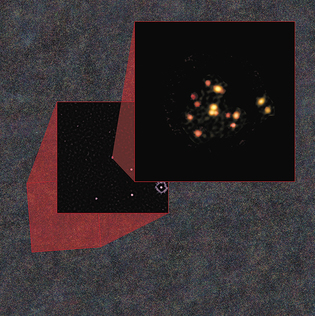 loading
loading
FindingsWhen galaxies collideAstronomers find a protocluster of galaxies from the early universe.  National Science Foundation's South Pole TelescopeView full imageEons ago, the early universe bore witness to a galactic car crash. Tim Miller ’23PhD, a student in Yale’s astronomy department, is one of an international group of researchers examining sky survey data from the South Pole Telescope. They noticed an unusually bright spot that goes by the prosaic name of SPT2349-56. When the team examined SPT2349-56 with a more powerful radio telescope in Chile, they discovered that what Miller calls a “bright needle in the cosmic haystack” was actually at least 14 separate galaxies—all in the process of coming together to create a single huge object known as a galaxy cluster. Since the 14-plus galaxies haven’t yet converged, the cosmic crowd is a protocluster. It’s spawning stars 50 to 1,000 times faster than our Milky Way can manage. Galaxy clusters are among the most massive structures in the sky. According to current models of the development of the universe, these titans started taking shape about 3 to 4 billion years after the creation event called the Big Bang. Yet SPT2349-56 dates from much earlier: around 1.4 billion years post–Big Bang. It’s “completely unexpected” to find protoclusters this large at a time when the universe was so young, says Miller, lead author on the research (which was published in the April 25 issue of Nature); “Because SPT2349-56 dates from so long ago, studying it should help astronomers find out how protoclusters “grew and evolved in the early universe—and what they might look like now.”
The comment period has expired.
|
|